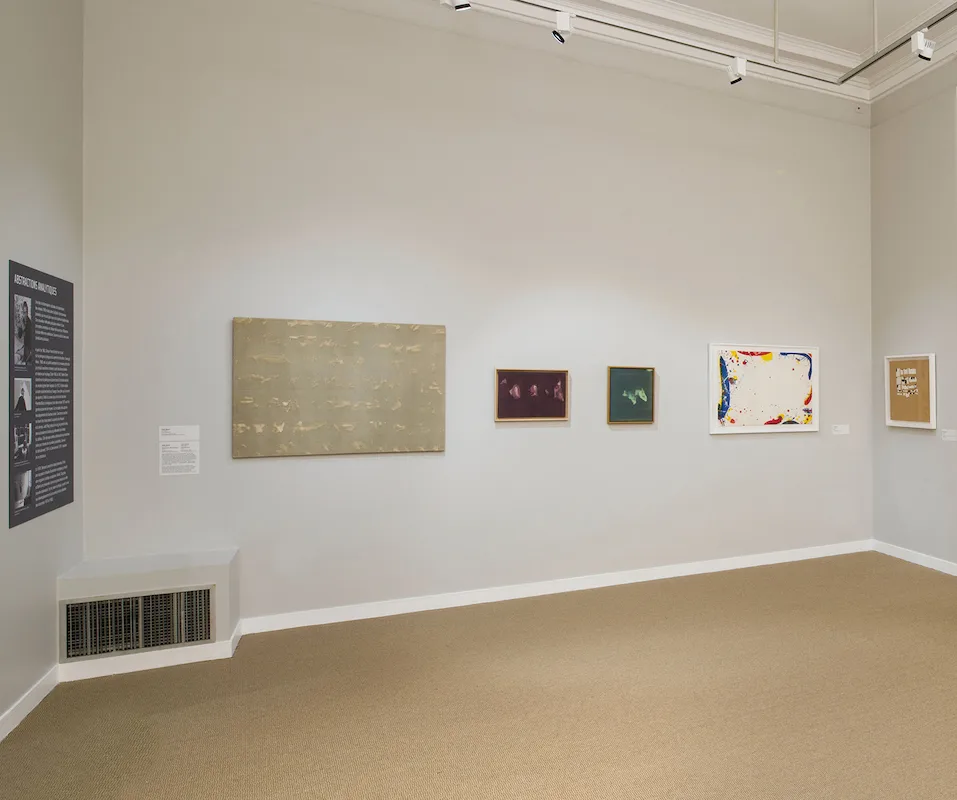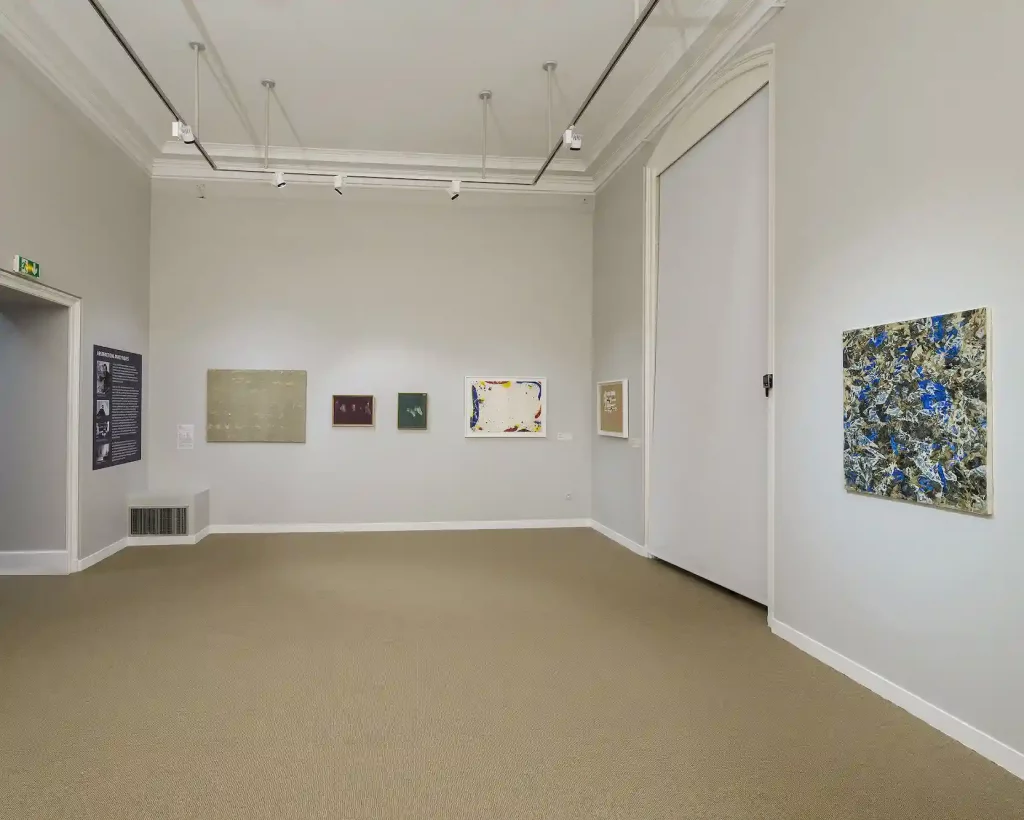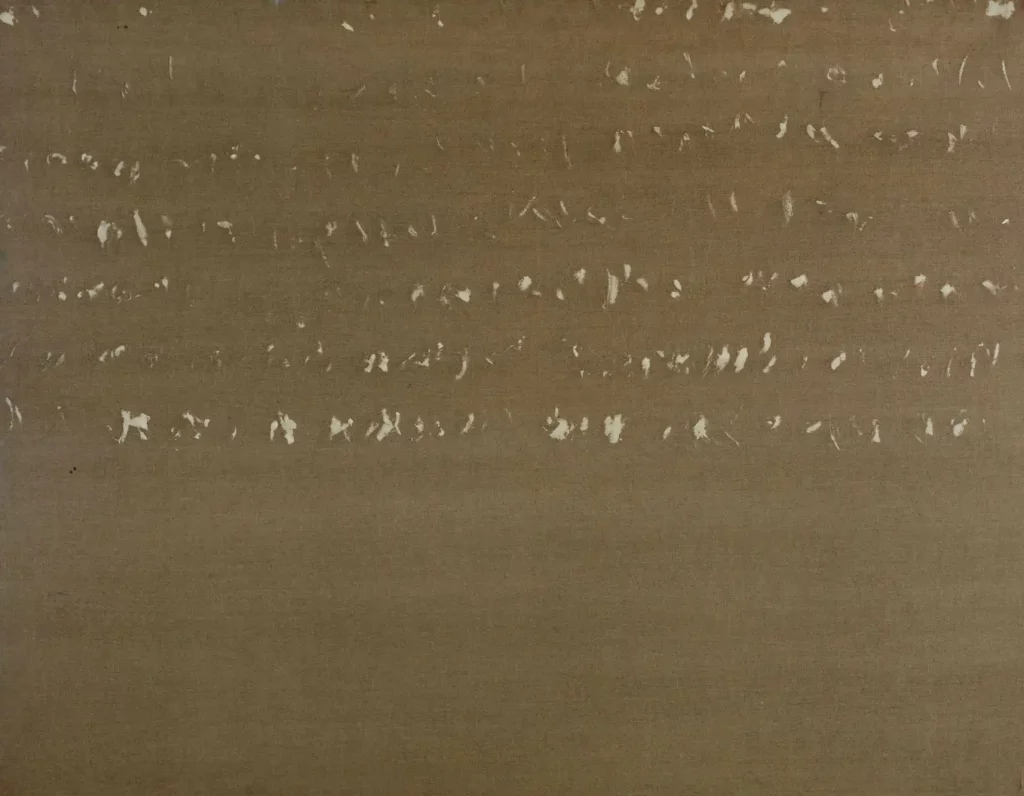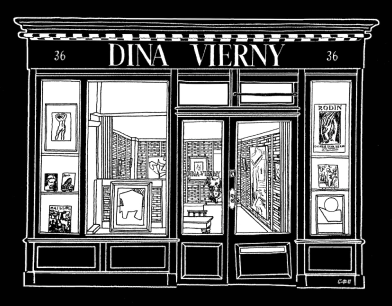All Exhibitions here
Since 10 February 2024, the Musée de Téssé in Le Mans has been presenting the exhibition "Le choix de la peinture", offering an overview of three decades of abstract painting in France, from the 1960s to the 1980s.March 22, 2023
 View of the exhibition "The Choice of Painting" at the Museum of Téssé, 2024 © Alberto Ricci Arteos Expositions
View of the exhibition "The Choice of Painting" at the Museum of Téssé, 2024 © Alberto Ricci Arteos Expositions The works of forty-six artists are on show, capturing the diversity of new artistic approaches. Redefining gesture, colour and the very concept of the painting.... these developments echo the move beyond the lyrical, gestural abstraction that characterised the post-war period. The artists chosen for this project include Serge Poliakoff, Joan Mitchell, Hans Hartung, Simon Hantaï and Jean Dubuffet, as well as Judit Reigl, whose Dina Vierny Gallery is delighted to be lending a painting from the Déroulement series for the occasion.


View of the exhibition "The Choice of Painting" at the Museum of Téssé, 2024 © Alberto Ricci Arteos Expositions
In the 1960s, abstract painting entered a phase of profound renewal, despite the paradoxical statements in the press about a supposed crisis. Artists simplified their practices, developed new tools and explored new ways of using colour on canvas. This period marked a turning point when abstraction became less a space for lyrical expression than a reflection on the means of painting, as Jean Messagier emphasised: "It's not the painting that counts, it's the painting". Around 1968, a new generation of artists, notably the members of the Supports/Surfaces group, pursued this quest for neutrality by deconstructing the painting through simple gestures and the use of unstretched canvases. They also drew inspiration from American abstraction. However, in the 1970s, some artists remained attached to the stretcher, while around 1980, the painting once again became a central issue, expressing a new conception of space, gesture and colour.

Judit Reigl, « Unfolding », 1975, Mixed media on canvas, 89.5 x 113.5 cm
Judit Reigl's "Unfolding", dated 1975, is a perfect illustration of this new concept. The artist's creative process is detached from the stretcher, the canvas invades the studio space and, against a musical backdrop, Judit Reigl moves around, making brushstrokes as she goes: "If the music stops, I stop; if it changes, I continue - discontinuously - until the inscription, completely decoded, invades all the available space (leaving gaps only where the pictorial field has no support behind it, or where silence cuts it off, or angles and projections break it). "

View of the exhibition "Judit Reigl, Panta rhei" at the Galerie Dina Vierny, 2024 © Romain Darnaud / Galerie Dina Vierny
In the 1960s, abstract painting entered a phase of profound renewal, despite the paradoxical statements in the press about a supposed crisis. Artists simplified their practices, developed new tools and explored new ways of using colour on canvas. This period marked a turning point when abstraction became less a space for lyrical expression than a reflection on the means of painting, as Jean Messagier emphasised: "It's not the painting that counts, it's the painting". Around 1968, a new generation of artists, notably the members of the Supports/Surfaces group, pursued this quest for neutrality by deconstructing the painting through simple gestures and the use of unstretched canvases. They also drew inspiration from American abstraction. However, in the 1970s, some artists remained attached to the stretcher, while around 1980, the painting once again became a central issue, expressing a new conception of space, gesture and colour.
 View of the exhibition "The Choice of Painting" at the Museum of Téssé, 2024 © Alberto Ricci Arteos Expositions
View of the exhibition "The Choice of Painting" at the Museum of Téssé, 2024 © Alberto Ricci Arteos Expositions Since 10 February 2024, the Musée de Téssé in Le Mans has been presenting the exhibition "Le choix de la peinture", offering an overview of three decades of abstract painting in France, from the 1960s to the 1980s.
The works of forty-six artists are on show, capturing the diversity of new artistic approaches. Redefining gesture, colour and the very concept of the painting.... these developments echo the move beyond the lyrical, gestural abstraction that characterised the post-war period. The artists chosen for this project include Serge Poliakoff, Joan Mitchell, Hans Hartung, Simon Hantaï and Jean Dubuffet, as well as Judit Reigl, whose Dina Vierny Gallery is delighted to be lending a painting from the Déroulement series for the occasion.
In the 1960s, abstract painting entered a phase of profound renewal, despite the paradoxical statements in the press about a supposed crisis. Artists simplified their practices, developed new tools and explored new ways of using colour on canvas. This period marked a turning point when abstraction became less a space for lyrical expression than a reflection on the means of painting, as Jean Messagier emphasised: "It's not the painting that counts, it's the painting". Around 1968, a new generation of artists, notably the members of the Supports/Surfaces group, pursued this quest for neutrality by deconstructing the painting through simple gestures and the use of unstretched canvases. They also drew inspiration from American abstraction. However, in the 1970s, some artists remained attached to the stretcher, while around 1980, the painting once again became a central issue, expressing a new conception of space, gesture and colour.

Judit Reigl, « Unfolding », 1975, Mixed media on canvas, 89.5 x 113.5 cm
Judit Reigl's "Unfolding", dated 1975, is a perfect illustration of this new concept. The artist's creative process is detached from the stretcher, the canvas invades the studio space and, against a musical backdrop, Judit Reigl moves around, making brushstrokes as she goes: "If the music stops, I stop; if it changes, I continue - discontinuously - until the inscription, completely decoded, invades all the available space (leaving gaps only where the pictorial field has no support behind it, or where silence cuts it off, or angles and projections break it). "

View of the exhibition "Judit Reigl, Panta rhei" at the Galerie Dina Vierny, 2024 © Romain Darnaud / Galerie Dina Vierny
